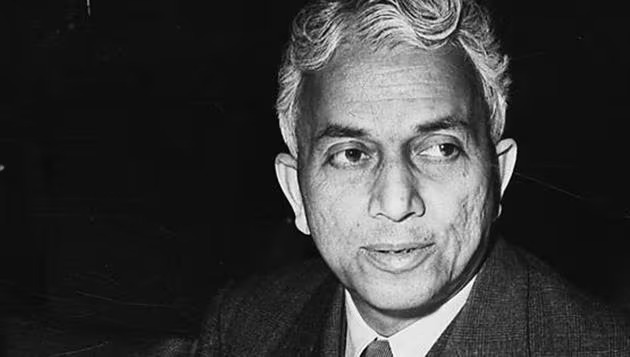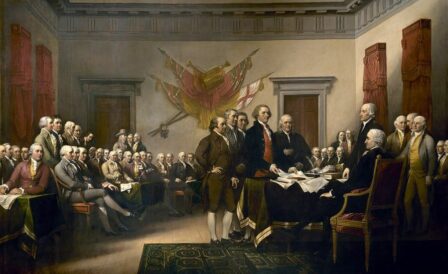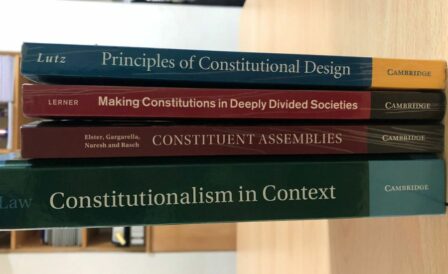
Sir Benegal Narsing Rau, born on the 26th of February 1887 in a small town in South Kanara district, played a key role in the making of our Constitution. In his long career as a civil servant and judge, he had earned a reputation of being a peerless administrator and expert on legal and constitutional matters.
For these reasons, he was an obvious choice for the role of constitutional adviser to the Constituent Assembly. Most scholarship focusses on his significant contributions to the Assembly — the collation of the various committees’ reports into a Draft Constitution, his travels around the world meeting with constitutional experts, and his critical interventions on the due process clause.

To commemorate B.N. Rau’s 136th anniversary, this piece draws attention to a document authored by Rau that has received relatively little attention: Outlines of a New Constitution. Rau drafted this document while he was at the Reforms Office in the Governor-General’s Secretariat in January 1946. This was during the immediate post-war years, with the situation clearly favouring an imminent transfer of power from the British to Indian hands. There was a lack of clarity, however, regarding the constitutional scheme through which this would be done.
The upcoming elections to the provincial legislatures were to be fought by the major political parties on the basis of contrasting political visions for India’s future. While the Indian National Congress emphasised the unity of the country and the necessity of immediate transfer of power, for the Muslim League the demand for a strong independent Pakistan was foremost. Thus, there was political and constitutional deadlock.
In this situation, Rau felt compelled to devise a practical solution that could reconcile, to the extent possible, the conflicting demands of the two major parties. Outlines was the result of this labour. In his own words, “The essence of the scheme is that while domination of one community by another is to be prevented, the unity of India is to be preserved for purposes equally beneficial to all.”
The plan put forward by Rau called for a federal ‘United States of India’ comprising of three types of territories: British Indian provinces, Frontier provinces, and the Princely States and tribal areas. The Frontier provinces effectively corresponded to the territories that the Muslim League claimed for Pakistan. Provinces would have autonomy in all matters except defence, external affairs, communications and the related finances.
Rau proposed that the British Provinces and Frontier Provinces should have equal representation, or parity, in the Union’s executive and legislature, regardless of their population and size. His aim was to prevent political power in the parliament and executive from being entirely dependent on numerical strength of various political groups. This was precisely what drove the demand for Pakistan, the fear that a Hindu political majority would result in Hindu political domination. Rau designed this representation scheme without mentioning religion, instead using the language of territory. He noted that this approach had succeeded in other politically sensitive regions, such as Austria-Hungary and Ireland.

Suman Sharma in State Boundary Changes in India, suggests that Rau’s paper had a significant influence on the Cabinet Mission proposals on the constitutional future of India. The Plan was similar to Rau’s in many ways: a strong federation with the Union in charge of only three subjects, indicating there might have been some influence.
Outlines was one of many attempts by political observers and actors of its day to resolve the political conflict in India through a distinct constitutional vision. What makes Outlines distinct is that it aimed for a more modest outcome of bringing the leaders of the League and Congress to the table, identifying the core concerns of both parties, and proposing a somewhat novel scheme of representation and federalism to address them.
Resources
- Norms and Politics: Sir Benegal Narsing Rau in the Making of the Indian Constitution, 1935-50 by Arvind Elangovan, Oxford University Press, 2019
- State Boundary Changes in India: Constitutional Provisions and Consequences by Suman Sharma, Deep & Deep Publications, 1995
More blog posts

Independence: A Tale of Two Declarations
14 August 2023 • By Editorial Team
What impact did the American Declaration of Independence have on the Declaration of Purna Swaraj introduced by the Indian National Congress in 1930?

5 Essential Writings on Constitution Making
07 September 2022 • By Editorial Team
Here we highlight 5 works in the field of constitution making that help readers to understand the processes involved in this field.
